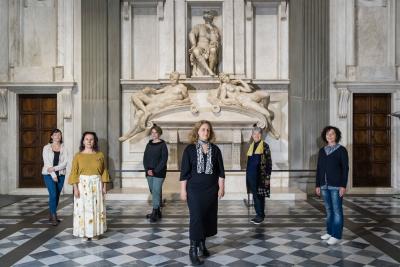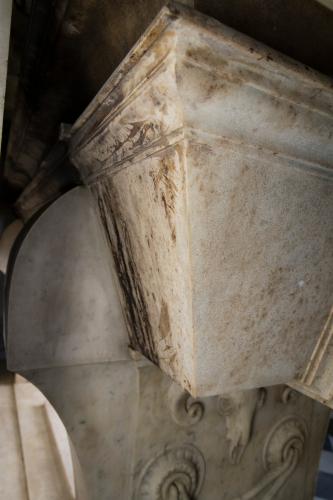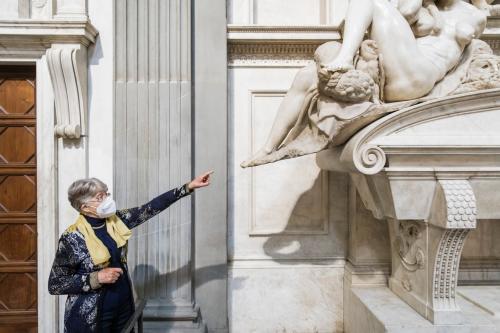The team who used bacteria to clean up Michelangelo's marble

FLORENCE - The all-female team, who for the last eight years have been restoring the interior of the New Sacristy of the Basilica of San Lorenzo, are this month preparing to officially reveal the results of their work, and more importantly, the work of their secret weapon: bacteria from Neapolitan tannery waste and diesel-contaminated soil, according to a New York Times report.
In November 2019, the last problem the group had to face in their restorations were the deep stains that had accumulated on the white Carrara marble of Michelangelo’s sculptures. Once smooth, shiny stone had become blackened and crusty.
Italy’s National Research Council revealed, thorough infrared spectroscopy, calcite, silicate and other organic substances spread all over the marble. The main victims were Michelangelo’s tomb for Giuliano di Lorenzo de’ Medici, with its allegorical sculptures of Night and Day, and his tomb for Lorenzo di Piero de’ Medici, with its sculptures of Dusk and Dawn.
The results of the National Research Council’s spectroscopy allowed Anna Rosa Sprocati, a biologist at the National Agency for New Technologies and member of the restoration team, to pick the right bacteria for the job.
It was Monica Bietti, one of the restoration team and former director of the Medici Chapels Museum who realised in 2013 (when she was director) how seriously restorations were needed. The idea to use bacteria on the New Sacristy, however, came from Marina Vincenti, one of those working on the restorations, who in 2016 saw a conference given by Sprocati on the value of using bacteria to eat up the dirt on priceless works of art - a technique which she had already used on Carracci’s frescoes in Rome’s Palazzo Farnese.
Paola D’Agostina, director of the Bargello Museums, which also oversees the Medici Chapels, agreed to the technique, and so they began to test eight, completely nonhazardous, types of bacteria on a small corner of marble behind the altar.
They used Pseudomonas stutzeri CONC11 and Rhodococcus sp. ZCONT, collected from collected from areas of industrial waste and contaminated soil from around Italy. They took more care with the fragile facial features of the statues, using micro gel packs of xanthan gum.
This was all before February 2020 when the sudden appearance of a more harmful microorganism shut down the restorations for months.
They resumed when the museums opened at half capacity in October, and let Serratia ficaria SH7 work its magic on the tomb of Lorenzo di Piero.
The restorers partially attribute the profusion of dirty bacteria in the sacristy to the body of Alessandro de’ Medici, Duke of Florence, buried in the same tomb as his father, Lorenzo di Piero de’ Medici. He was supposedly never eviscerated and entombed properly, after his assassination, and over the 500 years since his death bacteria has been steadily spreading from his corpse.
Sprocati’s bacteria triumphed over Alessandro’s and the newly buffed and shined marble will this month be once again open to the public.
ol




